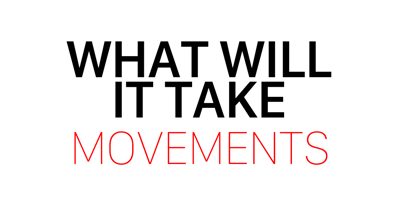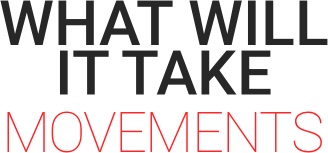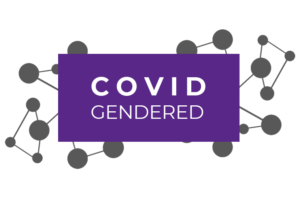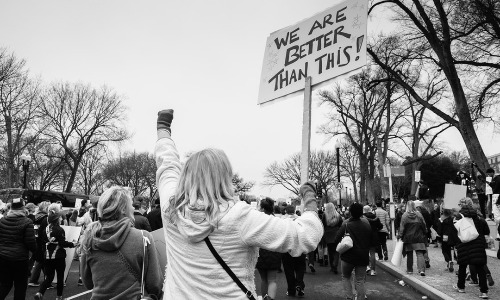By Marianne Schnall
Over the past several years, we have seen women rising up in all kinds of powerful ways. In addition to the unprecedented surge of women running for office and organizing grassroots movements, women have also been exerting their influence through philanthropy, mobilizing their economic power and resources to create change by giving to myriad causes, campaigns and donor networks aligned with their values.
Women have become increasingly energized and resolute, and our commitment to giving has strengthened and continued. In the wake of the COVID-19 pandemic (and growing awareness about the many cracks and inequities that plague our society and institutions such as systemic racism), women’s philanthropy has become a powerful force responding to the many urgent needs on a local and national level, filling in the gaps of inadequate government funding and also addressing the often unrecognized specific needs of marginalized communities who have been disproportionately impacted by COVID-19, including women and Black and Indigenous people of color (BIPOC).
The fact is, we need philanthropy more than ever—not just to assist those who are most vulnerable as a result of the pandemic but also to proactively use gender-lens, intersectional giving as an engine to support a purposeful re-shaping and rebuilding of a more equitable and just world. Money is underutilized as an enormous potential force for good, and now is the time to use as many tools as we have to address the many serious problems we currently face.
I reached out to an esteemed group of leaders in the space of women’s philanthropy to get their visions about the role philanthropy could play in these turbulent and transformative times, what innovative ways their organizations and members are responding, how women can lead the way and mobilize resources, and also what ideas they have to inspire a culture of giving. We are in a moment where no matter what resources we have—be it in dollars, in time volunteering, in both small and grand acts of kindness—we all have a role to play in supporting each other and contributing to positive change at this pivotal point in our history.
With insights from: Jennifer Alcorn, Emilienne de León Aulina, Elizabeth Barajas-Román, Sarah Haacke Byrd, Vanessa Daniel, Latanya Mapp Frett, Donna P. Hall, Surina Khan, Monique W. Morris, Ana Oliveira, Kavita Ramdas and Teresa Younger

“Give now. Give more than you think you can. You have gifts to offer and they are needed now more than ever.” –Jennifer Alcorn
Jennifer Alcorn
Deputy Director, Philanthropic Partnerships of the Bill & Melinda Gates Foundation
How do you see the role of women’s philanthropy as a positive force of aid and change in the wake of the pandemic? What are the immediate needs and priorities and how do you balance them with your long term goals?
Women often think holistically about their giving. That hasn’t changed during this pandemic or in this historic moment in the United States. Philanthropic capital is the first mover during any crisis. It also—often quietly—fuels social movements. We’re at the intersection of both right now and giving has never been as important as it is right now.
Before the pandemic started, women were increasing their giving and broadening beyond what they might normally support. From research and development, local food banks, giving direct relief to families across the country, to global health—women are a driving force behind the increase in giving we’re seeing right now.
They’re also giving differently. Women are using their voices, their talents and their dollars to empower others to lead. What I love is that we’re seeing them do this collaboratively through giving circles or their peer networks like Women Moving Millions and Women’s Funding Network.
How to balance immediate needs and priorities with long-term goals is a question we are hearing a lot from all givers. Thinking about giving as an annual or multi-year portfolio of investments is one way to approach this. Your largest gifts—about 40 percent of your yearly giving—should be long-term investments focused on systemic change. These are the things that take years to catalyze, shift, or change. These are the things that you’re measuring over time.
Twenty to thirty percent of your giving—or even higher right now—should be for immediate needs. These may be less measurable but are meeting an incredibly important and urgent need. Holding aside a percentage—five to ten percent—of giving to respond to asks from friends, family, or for unanticipated events can also be a helpful tactic.
Finally, there are the must-do gifts: the obligations that you commit to each year like supporting your alma mater, annual giving campaigns for your children’s schools, the nonprofits that you serve on the board of, and cultural institutions. Holding aside ten to twenty percent of your giving for these things allows you to strategically plan the rest of your portfolio.
As women are stepping up to lead in numerous ways, how do you see the potential of women mobilizing their money and resources as part of that leadership? What are some examples of the innovative ways your organization and members have been responding? What new tools and strategies are emerging?
Women have always been leading but, by habit, it’s been from behind. What I’m excited about is how women are asserting and owning their leadership in more public ways. They are bringing more than just money to the table—they are bringing their voice, their expertise and their personal experiences to bear on an issue.
Sara Blakely’s Red Backpack campaign is a great example. She’s putting her voice and her brand behind empowering women entrepreneurs during a pandemic. She knows women-led startups receive less capital and that COVID-19 will only exacerbate that. Not only is she making women entrepreneurs a philanthropic priority, she’s bringing her customers and other businesses along with her too.
Another example is Indrani’s Light [now called RAFT]. Indrani Goradia is a philanthropist who focuses on preventing gender-based violence and empowering women to trust and care for themselves. During the pandemic, she’s been leading meditation and self-care sessions for overworked and stressed healthcare and nonprofit staff. She knows how critical it is to help yourself if you’re going to help others. This is a different kind of expertise and leadership, and it’s filling a critical and neglected gap.
What inspiration or examples would you offer on how we can cultivate a creative spirit of giving, no matter what level of resources we have?
Give now. Give more than you think you can. Whether it’s donating money, time, voice or expertise, you have gifts to offer and they are needed now more than ever. It’s okay to take a risk. And it’s okay that not everything will be measurable. Giving when there is a need and because you can is an act of empathy and grace. Truly listen to the communities you serve and support to understand what is needed from you in this moment.
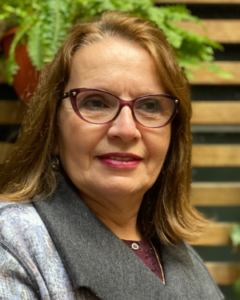
“The key question is how philanthropy can contribute to the needed changes in the world in order to build healthier societies.” –Emilienne de León Aulina
Emilienne de León Aulina
Executive Director of Prospera, The International Network of Women’s Funds
How do you see the role of women’s philanthropy as a positive force of aid and change in the wake of the pandemic?
Women have always been on the front lines of any crisis, whether natural disasters or economic crises, political turmoil or sanitarian crises. They are always ready to organize and support their families, neighbors or communities. As you can see, the majority of countries led by women have responded in better and more empathic ways to the pandemic.
What are the immediate needs and priorities, and how do you balance them with your long-term goals?
As a network of women’s funds, members of Prospera have flexibilized their grant-making and supported many of the activists and organizations they work with. They have also offered immediate and emergency funding that was critical for many activists. They are also looking for innovative ways of giving and incorporating care and self-care as one of the relevant ways of support.
As women are stepping up to lead in numerous ways, how do you see the potential of women mobilizing their money and resources as part of that leadership?
Women’s funds are working with individual donors, the majority of which are women and are very committed to continue giving because of COVID and its implications. Women can have a huge potential to mobilize resources at the local level. One of the ways where the economic crisis can be solved is through dynamizing the local economy, where women can play a critical role. One example of how women’s funds are moving to support is FIMI, The International Indigenous Women’s Fund, which is creating an economic empowerment program to support indigenous women in their communities to overcome the crisis.
Other women leaders like Mary Rusimbi, the Executive Director of Women Fund Tanzania and Prospera board member, just launched the African Women Leaders Network chapter in Tanzania in order to draw attention to the disproportionate socio-economic consequences to women due to the pandemic. She declares that women are the majority in the informal sector so will bear the brunt of the economic crisis and also are the primary caretakers and are increasingly carrying the burden of domestic work.
Women leaders uniting their voices can ask for needed changes at the national and global levels toward building a more sustainable socio-economic system.
What are some examples of the innovative ways your organization and members have been responding?
There are multiple ways that women’s funds are mobilizing resources during this crisis and in light of the future economic crisis. One example is the recent creation of the Global Resilience Fund, initiated by Women Win, which launched as a collaboration among many members and that will look to support organizations and informal groups of girls, young women and/or trans and intersex people. This shows the power of collaborations led by women. They are raising funds from private foundations as well from any woman that wants to support this amazing effort.
What new tools and strategies are emerging?
The virtual way of working has become part of daily life. Activists and women’s groups are organizing collective demonstrations using online platforms, getting the voices of the less heard through digital tools like podcasts and videos, so the movements can continue. The women’s funds are supporting them, but the resources are not enough. It is necessary to get the resources of technology and digital platforms into the hands of women, girls and trans people and provide these groups with minimum equipment for them to continue doing their work.
The majority of the foundations have made a commitment to make their grantmaking more flexible because of the COVID crisis. More core support and less bureaucracy in the way of giving can be an innovative way of advancing the resources of philanthropy.
What inspiration or examples would you offer on how we can cultivate a creative spirit of giving, no matter what level of resources we have?
We need to think beyond COVID and look at how the future can change for better and not for worse. We at Prospera are working jointly with other networks of donors—like The International Funders for Indigenous Peoples (IFIP), Philanthropy Advancing Women’s Human Rights (PAWHR), Human Rights Funders Network (HRFN), Engaged Donors for Global Equity (EDGE) and others—in order to have a common reflection on how philanthropy can do better in light of the challenges the COVID pandemic is bringing to humanity and to human rights, women’s rights, environmental rights. The key question is how philanthropy can contribute to the needed changes in the world in order to build healthier societies.
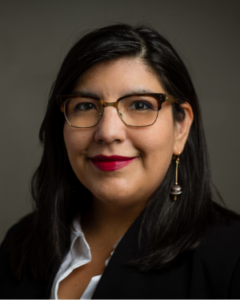
“Any meaningful plan for recovery must be rooted in racial, economic and gender justice in order to rebuild a more resilient world for all.” –Elizabeth Barajas-Román
Elizabeth Barajas-Román
President and CEO of Women’s Funding Network
How do you see the role of women’s philanthropy as a positive force of aid and change in the wake of the pandemic? What are the immediate needs and priorities and how do you balance them with your long term goals?
The Women’s Funding Network began nearly 40 years ago with the vision that democratizing philanthropy through local funds created by and for women could dismantle gender inequity region by region across the globe. Today, during this unprecedented crisis, we see the true power of that vision in action. Despite managing financial loss and illness within their own institutions, women’s funds and foundations have become the first responders of philanthropy—quickly resourcing movements at the intersection of race, gender and class. Together, our members are harnessing the financial power, influence and voices of communities in 37 U.S. states and six continents. In many cases, place-based women’s funds are recasting their work in order to fill gaps in government relief funding—funding that has largely failed to meet the needs of women of color and their families.
Our members know firsthand that addressing just one issue isn’t sufficient for lasting change. Any meaningful plan for recovery must be rooted in racial, economic and gender justice in order to rebuild a more resilient world for all. Whether working to decrease gender-based violence, to increase educational outcomes for girls or to improve the health and well-being of young women, all efforts are part of an intersectional, holistic, community-informed approach needed for improving economic mobility, health, safety, pandemic recovery and resilience outcomes for women and girls.
As women are stepping up to lead in numerous ways, how do you see the potential of women mobilizing their money and resources as part of that leadership? What are some examples of the innovative ways your organization and members have been responding? What new tools and strategies are emerging?
The only way to respond and rebound effectively from the COVID crisis is to ensure women are heard and empowered to design and implement programs and policies. Those closest to the problems are closest to the solutions; we must ensure that the women who experience the deepest economic impacts are seated at the tables of power. Because of their deep, cross-sector relationships and the trust of front-line service providers, women’s funds and foundations are well-positioned to champion and channel resources to the areas of greatest need within their communities.
Here are a few examples of our Network and women’s funds and foundations taking action: The Women’s Funding Network created a $5-million-dollar Response, Recovery, and Resilience Collaborative Fund (RRRCF) that creates a space for women’s funds, institutional funders and donors to join forces for a multi-phase COVID-19 effort that has immediate and long-term impact. The Bill and Melinda Gates Foundation recently helped seed the fund with an award of $450,000. The RRRCF will organize and deploy resources to stabilize financially threatened women’s funds and foundations, as well as funding network members to develop and deploy the strategies that lead communities from recovery to resilience; The Women’s Fund of Greater Birmingham partnered with most of the childcare contractors in Alabama to develop the Rapid Operating and Relief (ROAR) for Women Fund, an emergency relief fund for at-risk childcare centers serving essential workers to provide resources and technical assistance needed to reopen; and The Women’s Foundation of Colorado WFCO Relief Fund supported over 100 grantees including women-led ventures and social enterprises, as well as additional operating dollars to essential services organizations.
What inspiration or examples would you offer on how we can cultivate a creative spirit of giving, no matter what level of resources we have?
Women philanthropists come in every race, ethnicity, economic background, immigration status and identity. The combined power of all gift sizes is what built women’s funds and foundations into the global force they are today. Making even a modest financial contribution to a local women’s fund or foundation means you’re investing in the leadership, resources and decision-making power of women in your community. Whether you’re interested in serving as a board member for a local women’s foundation or simply volunteering for a few hours, donating your time, expertise, mentorship, in-kind service or partnership-building potential are all incredibly important and impactful to our work and the lives and well-being of women and girls.
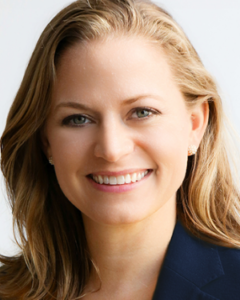
“It is time to harness the potential of women’s philanthropy to be a positive force for change.” –Sarah Haacke Byrd
Sarah Haacke Byrd
Executive Director of Women Moving Millions
How do you see the role of women’s philanthropy as a positive force of aid and change in the wake of the pandemic? What are the immediate needs and priorities and how do you balance them with your long term goals?
The coronavirus pandemic has shone a bright spotlight on the racial and structural inequalities that are eroding our democracy and stoking historic unrest—a combustible mix of frustration, anger and despair. The traditional approaches to philanthropy that we have leaned upon to address our greatest challenges have proven insufficient. We must chart a different path. It is time to harness the potential of women’s philanthropy to be a positive force for change.
Our approach at Women Moving Millions is grounded in the principles of feminist philanthropy: learning, listening, humility, empathy and collaboration. Feminist philanthropy challenges the power structures that have led to systemic oppression, exploitation and marginalization. Rooted in the spirit of partnership and trust, feminist philanthropists understand the need to share power and the importance of working holistically. As an approach, it recognizes the complex and colliding factors that marginalized communities face and the importance of working cross-issue and in cross-regional movements.
In a recent Women Moving Millions membership survey, 75% of our respondents said they plan to increase their giving over the next five years. This isn’t a coincidence. The gendered impacts of the current crisis are on full display. Economic insecurity, violence and lack of adequate health care, magnified by the crisis, could reverse the progress we’ve made in the fight for gender equality. With the unemployment rate for women at 15.5%—the highest since the Great Depression—our members are dialed into the magnitude of what this could mean long term.
While we hunger for long-term solutions to this crisis, we must attend to immediate needs such as food, shelter and safety. To understand how best to support their grantees, we are encouraging our members to simplify their grantmaking and to reach out, listen and trust those closest to the solution to know what is needed most. In these critical months, we have sought to elevate the voices of leaders from the field by convening virtual conversations with our members to show our solidarity and to create a safe space to listen, learn and understand what support is needed now and in the long term. We have had some heart-breaking conversations—there is so much loss and far too much injustice. This is the power of women’s philanthropy: to listen, learn and bridge understanding to inform how we work together in support of a shared agenda.
As women are stepping up to lead in numerous ways, how do you see the potential of women mobilizing their money and resources as part of that leadership? What are some examples of the innovative ways your organization and members have been responding? What new tools and strategies are emerging?
Women currently control $72 trillion, a greater amount of wealth than ever before. Seventy percent of women are set to inherit the majority of the $41 trillion in intergenerational wealth transfer expected in the next 40 years. This unprecedented wealth presents an unprecedented opportunity. The potential will come from understanding this power and using it strategically.
At Women Moving Millions, we are a case study in the combined power of women exercising their leadership and mobilizing resources to realize change. More than a decade ago, our founders recognized the transformative potential of a network of women coming together to leverage their voice, influence and resources to accelerate gender equality. Our early campaign raised more than $180 million to support more than 40 women’s funds nationwide. Today, we are a growing global community of over 330 individuals that has deployed more than $700 million to organizations working to benefit women and girls around the world.
To augment their philanthropy, women are using a variety of tools to make progress across a broad range of areas impacting gender equity and equality. Ten years since the Criterion Institute coined the term, “gender lens investing” is increasingly seen as a way to advance equity in the workplace and to promote products and services that will improve the lives of women and girls. With less than 3% of investment capital going to women-led businesses, we are seeing greater investment in women entrepreneurs.
What inspiration or examples would you offer on how we can cultivate a creative spirit of giving, no matter what level of resources we have?
Giving should be rooted in your values and core beliefs, and there are a lot of helpful resources out there to support families in this journey. One great example of this is the Give as We Grow program of the Phillips Foundation. A digital platform designed to inspire, educate and track philanthropic activity from as early as age three until adulthood, this program tackles how to foster a spirit of giving through content like games, educational videos and how-to guides, as well as create giving profiles for each family member to record individual donations and volunteer hours.
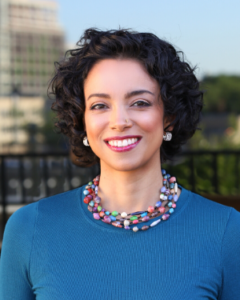
“We have to do the right and courageous thing, and we have to do it now.” –Vanessa Daniel
Vanessa Daniel
Founder and Executive Director of Groundswell Fund
How do you see the role of women’s philanthropy as a positive force of aid and change in the wake of the pandemic? What are the immediate needs and priorities, and how do you balance them with your long-term goals?
Feminist foundations like Third Wave, Ms., Libra and Women’s Foundation of California are setting the gold standard for supporting vulnerable communities during this pandemic. They are doubling down on what they were already doing right, which is focusing on giving to the most impacted communities, especially women of color and transgender people of color. These are the behaviors that other foundations should adopt.
Space is narrowing as catastrophic climate change nears. Smart philanthropic investments must address the short and long arc work simultaneously. Groundswell Fund’s long-term goal is an organized grassroots base powerful enough to win and defend systems change at the scale necessary to end injustice and save our planet. By focusing our funding on organizations that are building durable grassroots power through community organizing, voter engagement AND addressing basic needs such as food, housing, abortion care and birthing support in the COVID-19 moment, we address the immediate and long-term goals with every grant we make.
As women are stepping up to lead in numerous ways, how do you see the potential of women mobilizing their money and resources as part of that leadership? What are some examples of the innovative ways your organization and members have been responding? What new tools and strategies are emerging?
Groundswell Fund has received over $1 million in COVID-relief donations and moved nearly all of it out the door in a matter of weeks. Practically all of these dollars came to us from women of color and white women allies in the fight against white supremacy, patriarchy and transphobia. Women made this happen.
This pandemic is a signal that our house—the house of this country and this planet—has been on fire for some time now. We are approaching the point of no return. The people in philanthropy who have enough sense to know what time it is are overwhelmingly women of color, transgender people of color and white women allies. We know that the time for timidity has passed. The time for waiting for the right moment to spend our political capital as people working in philanthropic institutions has passed. We have to do the right and courageous thing, and we have to do it now.
Our grantees have been advancing incredible work to support the most vulnerable communities: New Florida Majority has hone banked 500 thousand people and surveyed 20 thousand people on the impact of COVID (one of three of these people signed up to volunteer with FNM this year), registered 100 thousand people to vote and distributed hundreds of food gift cards to their members who haven’t yet received their unemployment checks; ACT for Women and Girls is running a campaign on their county Board of Supervisors for rent forgiveness in Visalia, California, and gearing up for voter turn out; Trans Queer Pueblo is organizing to secure the release queer and trans people from immigrant detention centers in Arizona; United for Respect, who has been organizing Amazon and Walmart workers for years around reproductive justice and economic justice issues, is playing a major role in strike actions by workers at 60 Amazon warehouse locations and the largest coordinated call out by Walmart workers; Yellowhammer Fund is collaborating with The Knights and Orchid Society (a trans people of color-led organization) in Alabama to support access to full-spectrum reproductive health care and mutual aid for people in Alabama, Mississippi and the Florida panhandle; and Loud NY is training community advocates for digital organizing and census outreach for the Bangladeshi community.
What inspiration or examples would you offer on how we can cultivate a creative spirit of giving, no matter what level of resources we have?
Statistically, the most philanthropically generous people in this country are working class and poor. Many are tightening their belts during this pandemic to share what little they have with their friends and neighbors. That spirit of generosity and sense of interdependence is harder to find among the wealthy, who tend to hoard their money and give out only tiny amounts at a time.
It’s not working-class people but rather the wealthy who need to cultivate a creative spirit of giving. And not just in the form of money, but also through using their access to other people of wealth and key decision-makers to broker introductions and call in favors that support those working at the grassroots for social change.
We are in a countdown to a climate change apocalypse. You can’t take your millions with you—give it away while there is still a chance of saving the one planet we have!
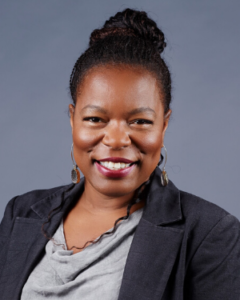
“There is no gender justice without racial justice. Our interconnection is undeniable.” –Latanya Mapp Frett
Latanya Mapp Frett
President and CEO of Global Fund for Women
How do you see the role of women’s philanthropy as a positive force of aid and change in the wake of the pandemic? What are the immediate needs and priorities and how do you balance them with your long term goals?
In many ways, feminist funds were built for this moment—to get support directly into the hands of feminist leaders to meet immediate needs in their communities and lay the groundwork for long-term change.
At Global Fund for Women, we are more committed than ever to our feminist funding principles, including flexibility. Our flexible core support is already designed for grantee partners to utilize in ways that they feel are best for their organizations and communities. We are also increasing our Crisis Fund grantmaking during COVID-19, focusing on response, recovery and resilience, recognizing the different stages of the pandemic and the need to address immediate, mid- and long-term needs.
As women are stepping up to lead in numerous ways, how do you see the potential of women mobilizing their money and resources as part of that leadership? What are some examples of the innovative ways your organization and members have been responding? What new tools and strategies are emerging?
The gender justice organizations Global Fund for Women supports are rising to the moment. They’ve quickly turned to address their communities’ needs in the pandemic, including running help lines for victims of domestic violence during shelter-in-place orders, working to maintain reproductive health services and abortion access while women must stay at home due to COVID-19 and organizing online instead of in-person to keep momentum going for political change and accountability.
We need funders of all genders to step up to meet the needs of gender justice organizations.
What inspiration or examples would you offer on how we can cultivate a creative spirit of giving, no matter what level of resources we have?
We’re in a time where the power of movements is undeniable. From the Green Wave to Black Lives Matter to Me Too. There is no gender justice without racial justice. Our interconnection is undeniable. COVID-19 has shown us this clearly as well: my health depends on your health and the health of the person beside you. We are all in this together and we are called to stand up and to fight for each other. Movements need resources, yes, but above all they need participation—for people to band together to forge powerful, systematic, sustainable change.
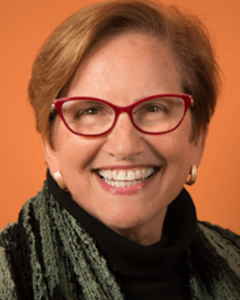
“We believe that working and joining forces is a better lever for change than doing the work individually.” –Donna P. Hall
Donna P. Hall
President and CEO of Women Donors Network (WDN)
How do you see the role of women’s philanthropy as a positive force of aid and change in the wake of the pandemic? What are the immediate needs and priorities, and how do you balance them with your long-term goals?
Women’s funds around the country came into existence because women and their needs were not being sufficiently supported by more traditional philanthropic organizations; in fact, only about 5% of foundation resources historically have been allocated to women and girls’ work. Women work in community, are strategic and organized and demonstrate success time and time again. They merit resources for immediate crises like COVID-19, as well as ongoing support for the organizations they form and run so that we will all benefit from systemic change at all levels, from local to national policies and practices. We recognize that now, more than ever, WDN needs to step up our funding to women, particularly to women of color, who deserve additional resources at a moment of suffering that is unprecedented.
As women are stepping up to lead in numerous ways, how do you see the potential of women mobilizing their money and resources as part of that leadership? What are some examples of the innovative ways your organization and members have been responding? What new tools and strategies are emerging?
Women have always been adept and creative at coming up with innovative, long-lasting solutions to systemic problems. At WDN, we have focused on investing primarily in women of color and other under-represented groups—and their organizations—to foster the work they need to do as they find solutions. For short-term critical opportunities we partnered with Solidaire to found the Emergent Fund in 2016, which today is playing a major role in moving money to groups that most need it as they face the COVID-19 crisis disproportionately to other groups. In response to Hurricane Katrina, we joined with the 21st Century Foundation to support women activists in New Orleans as they took leadership to rebuild their lives and communities. With our Jean Hardisty Initiative, we have worked to provide national leaders like Alicia Garza, Chrissie Castro and Jessica Byrd the resources they deserve to focus on the short- and long-term change they envision, taking a truly intersectional approach to problem-solving. We founded the Reflective Democracy Campaign, now in its seventh year, to forge a democracy whose leaders reflect the life experiences and diverse backgrounds of all the American people. And we were the seed funders of Ultraviolet, a rapidly growing online community mobilized to fight sexism and create a more inclusive world that accurately represents all women, from politics and government to media and pop culture.
WDN members know that this year is more critical than ever, and they are stepping up to make philanthropic investments in unprecedented amounts to our c3 and c4 grantees.
What inspiration or examples would you offer on how we can cultivate a creative spirit of giving, no matter what level of resources we have?
WDN works in partnership with others to “decolonize philanthropy,” to make charitable giving a noble and gratifying experience, whether one is contributing $5 or $500,000. Magical things happen whenever groups of women get together with a purpose in mind. At WDN, we get our inspiration from our members who form groups to study, build a community of like-minded women who share values and passions and who are committed to channeling their financial resources, activism and values into creating the world of equity and justice that we envision. We believe that working and joining forces is a better lever for change than doing the work individually.
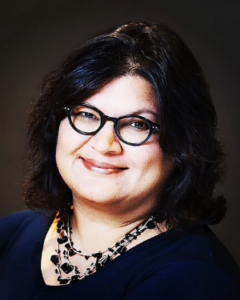
“A gender justice approach needs to be at the forefront of our response not only to this current crisis but to the longstanding challenges of inequality that persist.” –Surina Khan
Surina Khan
CEO of The Women’s Foundation of California
How do you see the role of women’s philanthropy as a positive force of aid and change in the wake of the pandemic? What are the immediate needs and priorities and how do you balance them with your long term goals?
Women’s philanthropy is uniquely positioned to lead in this moment of rapid response and as we shape the longer term efforts for policy shifts that advance gender, racial and economic justice. Women are being particularly impacted by the pandemic and we need women’s philanthropy to be a core part of the response.
Right now, two-thirds of California women are minimum wage workers, part-time workers or tipped workers primarily in service and retail industries who are losing jobs at a rapid pace. Women are the majority of our grocery workers and almost 80% of healthcare workers are women. Inside our homes, childcare and homeschooling as well as cleaning and cooking responsibilities are disproportionately held by women. While we are all impacted by the coronavirus pandemic, we are not all impacted in the same way. Women, people of color and people already struggling to make ends meet are feeling it more deeply, and people in abusive relationships are, unlike so many of us, not safer at home.
A gender justice approach needs to be at the forefront of our response not only to this current crisis but to the longstanding challenges of inequality that persist. Women’s Foundation California pivoted immediately to address these short-term needs, while centering a feminist response for long-term recovery. Part of that work is balancing rapid response support for basic needs like shelter and food with longer-term advocacy efforts that shift the root causes of inequities.
Across the board, women’s foundations are powerful partners ready to respond to immediate needs with the critical perspective and authentic relationships needed to facilitate a global feminist shift in the post-COVID recovery and restructure period.
As women are stepping up to lead in numerous ways, how do you see the potential of women mobilizing their money and resources as part of that leadership? What are some examples of the innovative ways your organization and members have been responding? What new tools and strategies are emerging?
As the stay at home order was announced in California, we immediately rallied to move additional funding to Women’s Foundation California grant partners through our COVID-19 Relief and Resilience Fund. Because our Relief and Resilience Fund was up and running early in the pandemic, we were poised to deepen our partnership with other foundations. Working with Blue Shield of California Foundation allowed us to distribute almost $3 million through our Fund, with $1.4 million being distributed to every domestic violence shelter organization in California. We requested minimal information from grant partners and wired funds to 130 domestic violence organizations across California. In total, since the beginning of March, our team has made 160 grants, which is more than we have done in any given year since our founding in 1979.
This collaborative problem-solving led us to expand our Relief and Resilience Fund. At the end of May, we committed to a first of its kind public-private partnership with the California Governor’s Office to raise $50 million in private funds to support domestic violence organizations and, in the longer term, strengthen organizations centering gender in California’s economic recovery plan. The fund will provide both immediate relief and invest in the necessary longer term policy shifts to build equity across racial, economic and gender lines throughout California. In addition to Blue Shield of California Foundation’s early investment, we are rapidly bringing on new partners including Levi Strauss Foundation, Stuart Foundation, Akonadi Foundation, Libra Foundation and several individual donors who along with the Governor’s office will help us reach our $50 million goal.
What inspiration or examples would you offer on how we can cultivate creative spirit of giving, no matter what level of resources we have?
The phenomenal organizers, connectors and power-builders who are part of the Women’s Foundation California network make it abundantly clear that we have the leadership we need to weather this moment and continue to build toward a just future. Part of our ethos at Women’s Foundation California is that everyone can be a philanthropist who invests in our collective well-being, whether that’s through financial resources, time, relationships, creativity or experience.
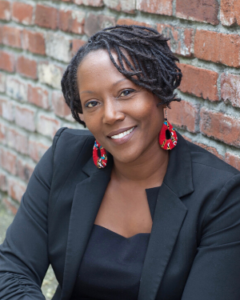
“This pandemic is an opportunity for women to engage the multiple ways of knowing that we often use in our leadership practice.” –Monique W. Morris
Monique W. Morris, Ed.D.
Executive Director of Grantmakers for Girls of Color (G4GC)
How do you see the role of women’s philanthropy as a positive force of aid and change in the wake of the pandemic? What are the immediate needs and priorities and how do you balance them with your long term goals?
This pandemic is an opportunity for women to engage the multiple ways of knowing that we often use in our leadership practice. For our work at G4GC and the communities that work with girls of color directly, the immediate needs associated with supporting responses to the urgent moment are linked to the long-term strategies of resourcing the movement. Clearly articulating the intersections between the two is important to leading in the most participative and responsive ways possible.
As women are stepping up to lead in numerous ways, how do you see the potential of women mobilizing their money and resources as part of that leadership? What are some examples of the innovative ways your organization and members have been responding? What new tools and strategies are emerging?
G4GC is a new organization as an independent entity, largely being birthed at the onset of a global pandemic and the urgent action to address the flagrant disregard for Black lives in the U.S. and beyond. Our work is to co-construct with the communities of Black/African, Indigenous/Native, Latinx, Middle Eastern and Asian Pacific American descent a praxis for resourcing the movement that includes girls, fem(mes) and gender expansive youth in the narrative about justice. To me, this work has to be participatory in order to be authentic. We recently launched the Love Is Healing COVID-19 Response Fund, which has already committed to resource dozens of organizations connecting the urgency of the moment to structural issues impeding positive life outcomes for girls of color. It is our goal to work with each of these organizations to further inform the public and philanthropic discourses about ways to resource girls of color.
What inspiration or examples would you offer on how we can cultivate a creative spirit of giving, no matter what level of resources we have?
I look to the wisdom of the mothers in my family and community. These mothers have developed strategies for feeding the spirit and bodies of our communities even when their resources were scarce. These mothers spoke truth even when it was difficult. These mothers implored us to rise to our best selves in moments of crisis and encouraged us to nurture relationships that share responsibility, rather than view moments of crisis as times for selfishness or blaming. That is a skill that is required in moments like these in order to fuel movements that can be sustained, grow and transform society.
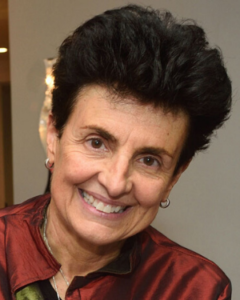
“Philanthropy is more than an act of giving; it’s taking action. And when women come together, there is a unique power held to create change.” –Ana Oliveira
Ana Oliveira
President and CEO of The New York Women’s Foundation
How do you see the role of women’s philanthropy as a positive force of aid and change in the wake of the pandemic? What are the immediate needs and priorities and how do you balance them with your long term goals?
These extraordinary times call for extraordinary giving. This is the time for philanthropy to increase our investments in the communities of women who are hardest hit by the COVID pandemic. The stakes are too high for funders to pull away when we are needed most. We will be dealing with the devastating legacy of COVID-19 for the unforeseeable future. Not only do we want to immediately alleviate the suffering that this pandemic has caused, we want to set the conditions for a better tomorrow. Our long-term goals as a foundation have always been to advance economic, gender and racial justice for marginalized communities. COVID exposes those inequities and pushes us to more urgently address these disparities for a better tomorrow.
As women are stepping up to lead in numerous ways, how do you see the potential of women mobilizing their money and resources as part of that leadership? What are some examples of the innovative ways your organization and members have been responding? What new tools and strategies are emerging?
Philanthropy is more than an act of giving; it’s taking action. And when women come together, there is a unique power held to create change. Our dollars are more powerful together. While COVID has had far-reaching impacts on many people, I’m grateful for a community of supporters that are by our side through this time. They’ve come to us wanting to help and we’re here to drive those resources directly into the communities who need it most. Take for instance our Emerging Leaders Network. They’re a dynamic group of emerging professionals who have adapted to this new virtual reality by mobilizing their communities online. And they’re responding by creating virtual events to build community with one another.
What inspiration or examples would you offer on how we can cultivate a creative spirit of giving, no matter what level of resources we have?
There are so many people who simply want to help and to be part of the solution to the revolutionary times we are living in. The Foundation is a place that you can channel that energy and be part of this movement for change. We pride ourselves on being an organization that values giving on every level. No matter the amount, giving to The Foundation holds the power to enact real change. Our Circle of Sisters is a prime example of what it means to cultivate a creative spirit of giving. We harness the power of women across diverse means of giving to drive change and foster the self-determination and leadership of women as philanthropists.
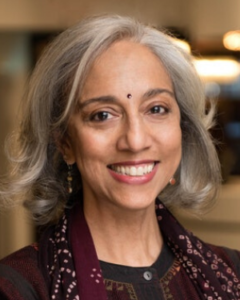
“The COVID-19 pandemic and the current uprisings for racial justice reveal women leading with love and demonstrating the power of care.” –Kavita Ramdas
Kavita Ramdas
Director, Women’s Rights Program of Open Society Foundations
How do you see the role of women’s philanthropy as a positive force of aid and change in the wake of the pandemic? What are the immediate needs and priorities and how do you balance them with your long term goals?
The root of the word “philanthropy” means “love of humankind.” The COVID-19 pandemic and the current uprisings for racial justice reveal women leading with love and demonstrating the power of care. Unlike traditional private philanthropy, the vast majority of women’s funds are set up as public charities. They know what it feels like to be vulnerable, worry about making payroll and each year’s budget. They have an understanding of the challenges their partners face, which breaks down the hierarchy between grantee and grantor common in mainstream philanthropy. They are grounded in movements.
In the pandemic, domestic violence, including violence against LGBTQ people, has spiked. Women’s funds understand that misogyny and economic injustice fuel violence in the family. Yet, instead of relying on police departments, which often further compound trauma in Black, brown and immigrant communities, they respond by honoring community practice, mutual aid and women-led responses. Their grants may be small, but they are given flexibly in general support for both crisis and long-term, ensuring that grant-making is indeed manifesting love.
Across the globe, women’s funds are under-capitalized, lack endowments and are unable to count on multi-year operating support. Open Society Foundation’s Women’s Rights Program joined forces with three other donors in 2019 to raise a collaborative fund for women’s funds in the Global South. Women’s funds here in the U.S. need a similar infusion of capital to sustain the movements key to open societies.
As women are stepping up to lead in numerous ways, how do you see the potential of women mobilizing their money and resources as part of that leadership? What are some examples of the innovative ways your organization and members have been responding? What new tools and strategies are emerging?
Women’s leadership in countries like New Zealand and Germany showed caring leadership can invest in government policies to protect workers and acknowledge care-work. Various studies show that women donors give a higher proportion of their net worth and focus on communities that most need support. Women in communities of color embrace a definition of philanthropy that involves giving time, talent, treasure and testimony. Women are more likely to volunteer and they spend more time volunteering than men. Their labor fuels civil society but often is uncounted when measuring giving. Increasingly, they are demanding that unpaid contributions be recognized. Of course, individual women donors are also contributing financially through groups like Women Moving Millions, the Women Donors Network and Prospera, the International Network of Women’s Funds.
What inspiration or examples would you offer on how we can cultivate a creative spirit of giving, no matter what level of resources we have?
Necessity is the mother of invention, and Rita Thapa is mother to Nepal’s women’s fund. In 1995, she tried to persuade her wealthy friends to donate money to the cause, but they laughed saying their husbands would never write a check! She took off the gold bangle on her wrist and placed it on the table asking, “Now, will you join me?” Five gold bangles on a table were the beginning of Tewa, which means “support.” It became a community-building project, not just a fundraising one.
Closer to home, we just welcomed the New York Caring Majority. This is an ambitious feminist effort, seeking to strengthen our society’s resilience in the face of racism, climate change and the pandemic. It realizes that as Dr. King warned us, “Philanthropy is commendable, but it must not cause the philanthropist to overlook the circumstances of economic injustice which make philanthropy necessary.” The Caring Majority is at the center of local, state and federal response seeking to build an economic system where tax dollars are invested more equitably for the public good.
Even if we wish to give financially, we do not have to wait to become Bill Gates or George Soros to demonstrate our love of humankind. Capitalism preaches excess consumption, but each of us can choose to invest what we may have otherwise spent on an outfit, dinner, or a show, on the causes we believe in. At the Global Fund for Women, our donors included young girls who shared their Bat Mitzvah gifts to support other girls across the globe to go to school. Money matters, but relatively small donors making modest gifts make a difference when they are part of a large pool, as we saw in the Warren and Sanders campaigns. Most importantly, it ensures both independence and integrity.
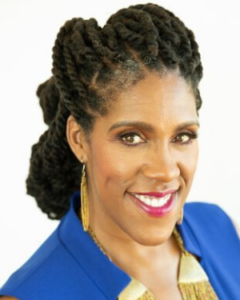
“Right now is a time for radical allyship, and that requires radical actions in order to accomplish the radical change necessary for true equity in this country.” –Teresa Younger
Teresa Younger
President and CEO of the Ms. Foundation for Women
How do you see the role of women’s philanthropy as a positive force of aid and change in the wake of the pandemic? What are the immediate needs and priorities and how do you balance them with your long term goals?
First, I would like to center my answer in that I believe women in philanthropy guided by feminist principles and core principles of equity can make a hugely positive change in our communities. I believe there is a common mistake made in using the term “women’s philanthropy” as if women or philanthropy are a monolith. Not all women’s or philanthropic organizations have the same mission, vision and value or are seeking the same objectives. The Ms. Foundation for Women and our work—like our grantee-partners and many of our philanthropic colleagues—is centered around and was founded on feminist principles of philanthropy.
These principles and our core belief in achieving social, political and economic equity for all people, is what guides us in both our short-term and long-term goals and philanthropic and movement work. That includes focusing on how we build collective power, listening to the needs of the field and the leadership of women and girls doing the work that needs to be done in their communities. Right now isn’t the time to detour or shift the focus away from supporting women, allowing communities to create and implement solutions and ensuring that women of color created and led organizations have the tools they need to continue supporting and benefiting their communities.
As women are stepping up to lead in numerous ways, how do you see the potential of women mobilizing their money and resources as part of that leadership? What are some examples of the innovative ways your organization and members have been responding? What new tools and strategies are emerging?
For over 46 years, the Ms. Foundation for Women has spent time listening to the field and allowing women to mold and guide how and where we do our work. That has not and will not change. Right now we need to double down on that support and continue to trust the strategies of our grantee-partners that are on the ground every day.
One of the primary ways that women can effectively mobilize their money is by supporting women of color, women-of-color-led organizations and intermediary philanthropic organizations, like the Ms. Foundation for Women, which supports women of color. As an intermediary, we know and continuously work to understand the national landscape.
Even before the spread of COVID-19 hit critical mass in our country, the Ms. Foundation for Women was going through the process of launching innovation funding solutions like the Activist Collaboration Fund (ACF). Launched in late January, the ACF funded $275,000 in grants to deepen collaboration across movement-building organizations, learn with movement leaders and increase investment in social justice movements across the country, supporting the often unfunded relationship and trust-building work that is crucial for transformational movement building work, particularly among organizations led by and for women and girls of color.
We have also used our platform to honor and celebrate women of color leaders from around the country at our very first live digital event, #RoarForWomen: A Feminist Block Party, raising over $170,000 to benefit women and girls of color around the country. You can watch that event and donate at live.forwomen.org.
What inspiration or examples would you offer on how we can cultivate a creative spirit of giving, no matter what level of resources we have?
At the Ms. Foundation, we are centered around building collective power and honoring the voices of ALL women, but especially by creating the space for women and girls of color to lead. Right now is a time for radical allyship, and that requires radical actions in order to accomplish the radical change necessary for true equity in this country.
Visit COVID Gendered for more articles, information and resources.
This article originally appeared at ForbesWomen.
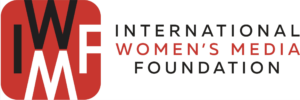 This story was produced in partnership with the International Women’s Media Foundation.
This story was produced in partnership with the International Women’s Media Foundation.
Marianne Schnall is a widely-published interviewer and journalist and author of What Will It Take to Make a Woman President?, Leading the Way, and Dare to Be You. She is also the founder of Feminist.com and What Will It Take Movements.
